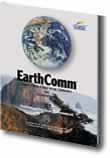The module chapters lead students from an understanding of processes that change the Earth’s surface to the impact of human activity and the ability to modify such changes based on an understanding of the relationships between the physical and human components of the systems. Understanding Your Environment uses an inquiry-based approach to lead students to an understanding of the Earth’s system processes that change the surface of the Earth.
Themes
Through their inquiry in this module, students develop understandings of the environment and complex Earth systems associated with change on the Earth’s surface. The major themes addressed include the following portions of the National Science Education Standards for Grades 9-12:
- Changes to the Earth’s surface are the result of the interaction of physical systems and are influenced by the activities of humans.
- Change is a natural and unavoidable phenomenon.
- Everyday people make decisions and conduct activities that affect their environment and Earth systems.
- Understanding the interaction between Earth systems and human activities will help citizens make choices that can modify the overall affect of human activity on the resulting nature and degree of change to their environment.
Bedrock Geology and Your Community
The Chapter Challenge for Bedrock Geology and Your Community is for students to develop a brochure or guide explaining the geologic history of their community, which can be used by their local Bed and Breakfast Association. The use of maps and models is incorporated into learning activities throughout the chapter. As students move through the chapter, they examine sedimentary, igneous, and metamorphic rock samples and learn how they form. Students then learn how rocks are distributed in the Earth’s crust, and how to read geologic maps and cross sections. By the end of the chapter, students should be able to put their acquired knowledge to use, detailing the geologic history of the their community and also placing this history into the larger perspective of the geologic history of the United States.
River Systems and Your Community
This chapter leads students to an understanding of the Earth’s river systems and processes that change the Earth’s surface on local and global scales. Student-based inquiry includes topics on the formation, characteristics, and changes associated with river systems. The characteristics of high and low gradient streams are investigated using both local and Internet data. Stream flow, erosion, deposition and their effects on landscape development are explored both in the classroom using models and maps, and in the field. Land use patterns and planning are related to past, present and future aspects of river systems in the students’ community. The Chapter Challenge presented to students is to plan a riverside park in or near their community.
Land Use Planning and Your Community
Many communities are becoming increasingly aware of the need to consider the interaction of Earth systems with human activities while planning for community development and growth. Earth systems that involve water, air, and soil are of particular importance to the development of communities. In this chapter, students will learn how people and Earth systems interact affecting community decisions about land use. The interrelationships between man’s activities on the Earth and Earth processes will become apparent as students are led to understand the human concerns regarding the watershed, atmospheric conditions, flooding, and landscape changes. Major chapter themes include change and interaction. Activities in the chapter are specifically designed to address local issues and concerns. As a result, heavy emphasis is placed on community-based research for both human and field resources. Each activity provides the student with information to incorporate into their Chapter Challenge. In the Chapter Challenge, students are asked to update the master plan for land use in their community. Land-use planning highlighting past, present, and possible future human and geological interactions is a major component of the Chapter.

